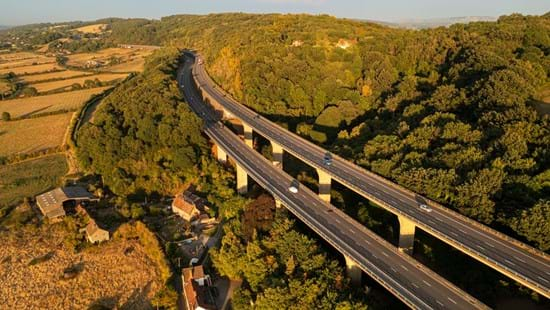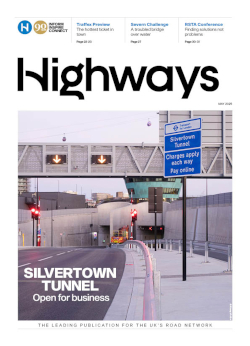National Highways has unveiled plans to deliver a more sustainable road network that protects and enhances the environment over the next three decades.
The government-owned company said its ambition, as set out in its Environmental Sustainability Strategy, is to ‘not only mitigate the impact of England’s busiest roads but ensure they can be used as a force for good for generations to come’.
It said that as one of the country’s largest landowners with 30,000 hectares of green land, it is vital that it commits to using this to reconnect habitats, reverse the decline in biodiversity, help wildlife thrive and build in environmental resilience to a changing climate.
However, it added that the strategy acknowledges the environmental impact of the strategic road network (SRN) – causing severance issues for nearby communities, fragmenting habitats, altering waterways and affecting the natural characteristic of the surrounding landscape.
The four million journeys on the network each day have also contributed to the UK’s carbon emissions while also generating noise, air and water pollution, the company admitted.
National Highways said it is already taking action to address these issues.
Chief executive Nick Harris said: 'Most journeys will still be made by road in 2050 so it is more important than ever that we manage our network in a way that balances the needs of today with those of tomorrow.
‘This is why we are passionate about making our network as environmentally sustainable as it can be. From the air that we breathe to the natural resources that we use to create and innovate; our economy, health and wellbeing depend upon a thriving environment.’

The Wynhol Viaduct carries the M5 above the Gordano Valley in Somerset
The new strategy lays out:
- National Highways’ long-term commitments to benefit the environment;
- Its plans to protect and enhance nature, reaffirm the commitment to net zero carbon and tackle local environment impacts for the benefit of communities;
- examples of improvements to the quality and connectivity of landscape and habitats;
It makes a series of commitments for the SRN with a focus on three key areas – the protection and enhancement of nature, carbon reduction and support for community health and wellbeing.
This includes using land to reconnect habitats that have been severed around and adjacent to the network, contributing to the national effort to reverse the decline in biodiversity, helping wildlife thrive by providing quality habitats, and building environmental resilience to a changing climate through initiatives such as natural flood management.
The strategy also commits to investing in measures to remove carbon from the network, support the transfer to zero-emission vehicles, develop new ways to reduce pollution and enhance historic and cultural features on, or close to, major roads.
Tailored solutions that 'could be delivered' as part of the plan include:
- erecting solar panels on noise barriers as part of a wider commitment to deliver renewable energy to the network;
- introducing wetlands for natural flood management;
- improving the visibility of heritage features from the road; vimproving all Sites of Special Scientific Interest (SSSIs) in its ownership and supporting wider enhancement where we can;
- taking action to address high-risk outfalls, improving the quality of water being discharged from the network into nearby rivers;
- connecting natural habitats on either side of a road by adapting existing bridges and underpasses and installing new features, such as green bridges, where beneficial.





